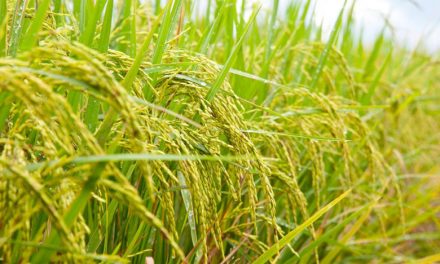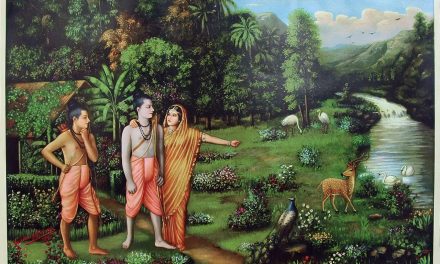The Natyachudamani of Somanarya is an unpublished musicological work originally written in Sanskrit and accompanied by a Telugu commentary. The author of this work is Ashtavadana Somanarya (Ashtavadana means one who can concentrate on or give attention to eight things at a time), said to be a student of Sitarama.
The author is also referred to as Somanatha in the work. In the commentary, the names Somappa and Somasuri also occur. The exact dates of the work and of the commentary are not known. However, scholars like M. Ramakrishna Kavi and R. Satyanarayana place Somanarya in the mid-sixteenth century (1540 AD) and he is believed to have lived during the reign of King Achyutaraya of the Vijayanagara empire.
Manuscripts of the Work
23 manuscripts containing this text have been identified in libraries across the world, out of which 5 are transcripts of the paper manuscript preserved in the Government Oriental Manuscripts Library and Research Centre, Chennai. Some manuscripts of this work also exist under other titles, namely Sangitaratnakara and Svararagasudharasa. However, a critical and careful study of the manuscripts suggests that Svararagasudharasa is probably the name given to the chapter on gita (singing) alone or to the commentary on the gita chapter. The title Sangitaratnakara only seems to be an additional title assigned to the work, perhaps to elevate it to the status of the Sangitaratnakara of Sarangadeva, a monumental and greatly acclaimed work.
A paper manuscript titled Taladasapranaprakaranam is also ascribed to Somanarya. This title seems to denote the heading (subject) given by the scribe. There is no colophon or any other indication regarding the name of the main work and the author anywhere in the manuscript, except for the heading found in the beginning, before the commencement of the actual work.
Contents of Natyachudamani
Natyachudamani is an incomplete work comprising three chapters – natya (performance), gita and vadya (instrumental music). The chapters on natya and vadya are incomplete, while the chapter on gita is complete. Most of the verses are composed in anustup metre (eight syllables in a quarter) while very few are in other metres like indravajra (eleven syllables), vasantatilaka (fourteen syllables) and sardulavikridita (nineteen syllables)
The work begins with an invocation to Sitarama, the preceptor of Somanarya, and lists many authorities on music. It also states that the work named Natyachudamani has been written in a condensed form by gathering concepts from many treatises. Gandharva is three-fold, gita, vadya and nartana and again nartana is said to be of three kinds, namely, natya, nrtta and nrtya. The origin of natyaveda and its greatness are then mentioned in the same way as seen in the beginning of the seventh chapter of the Sangitaratnakara of Sarangadeva. With this, the text proceeds to the gitadhyaya.
Gitadhyaya speaks of the following topics: nada, svara, sruti, grama, murcchana, eighteen srutis, ten bhedas of svara, vadi, samvadi, vivadi and anuvadi, sruti-jatis, alapti and kutatana. The work then speaks of the thirty-two ragas (eight masculine and twenty four feminine), their classification and characteristics. Various types of singers and their defects are given. This chapter ends with the definition of some musical forms such as gita, prabandha, suladi, namavali, curnika and natakam.
In vadyadhyaya, instruments are classified into five types, namely those born of nails, wind, skin, metal and the human body (voice). Structural details and playing methods instruments like, vina, kinnari, dandi, tumbura, rajabu, kamaksi, ravanahasta, murali, mukhavina, nagasara, devasara, sankha, kahala, upanga, cangu and mridanga, dhakka, dholu, bheri, damami, gadibidi, tamukku and kamsyatala are discussed in this chapter.
The text in a Musicological Context
At the commencement, Somanarya states that the work is being compiled by gathering the concepts from the books of earlier authorities (Bharatakartarah). Citations from texts like Dattilam, Naradiyasiksa and Sangitaratnakara, without acknowledgement, are seen. Some concepts like 22 srutis, sruti jatis, types of singers and defects of singers are identical to those found in the earlier traditional texts. At the same time, the work interprets some well-known concepts found in the Sangitashastras differently, thus deviating from them. For example, in most of the works, gita, vadya and nrtta are collectively termed sangita. But this work refers to the combination of these three as nada.
Another example is the description of the 4 kinds of svaras namely, vadi, samvadi, anuvadi and vivadi. The characteristics of these types of svaras are presented differently as follows: Vadi is defined as the svaras in ascent; Samvadi as the svaras in descent; Anuvadi as the succeeding svaras (in a sequence) Vivadi as the svaras striking each other. This form of interpreting vadi, samvadi, etc. seems to be novel and untraditional, but surprisingly, this has been faithfully adopted in many subsequent texts written in Sanskrit, Telugu and Tamil in the south, even until the twentieth century.
Innovations in Natyachudamani
Natyachudamani also introduces some new concepts, which are not present in the popular textual tradition.
1. Ahatanada is related to ascent (aroha) and anahatanada to descent (avoroha).
2. Svaras and ragas are associated with many extra musical attributes. In earlier works svaras are found to be associated with attributes like lineage, caste, colour, continent, sage, deity, metre and rasa (Sangitaratnakara 1, 3, 52-59). But in Natyachudamani, we find as many as 28 attributes for the svaras and 24 for the ragas. Apart from the ones mentioned above (lineage, caste, etc.) these texts specify the number of faces, eyes, ears, nostrils, limbs for the svaras; further they are endowed with food, garment, tree, flower, ornament, star, zodiac, day, etc.
3. The repeated occurrence of the svaras (murcchanas) in a particular or specific order is called svaralankara. This suggests that the earlier concept of alankara reflected in works like Sangitaratnakara has changed by the time of Natyachudamani. The commentary gives the following illustration: srgmgrsrgrsrgm, which is specified for the dhruvatala alankara in Caturdandiprakasika.
4. The work speaks of 10 varieties of svaras namely, sthayi svara, sanchari, ayatam, pratyayatam, kampitam, yedupu, dalu, ugram and muktam. Some of these terms occur in treatises in other contexts, but in this work the interpretation is quite new. The definitions of the svara varieties are not very clear and seem to suggest the characteristics of a svara, in terms of-
The region where a svara commences (sthayi, svara, ugram)
The region(s) where a svara manifests or shines (sanchari, mukta, yedupu, dalu)
Movement of a svara (kampitam)
Duration of a svara (ayatam, pratyayatam yedupu, dalu)
5. Another concept exclusively found in Natyachudamani and followed in the latter works influenced by Somanarya is that of 18 srutis. The mula and the commentary first speak of 22 srutis, their distribution among 7 svaras and their expansion into 66 varieties in 3 registers. Later 18 srutis are prescribed for the 7 svaras.
The names of the 18 srutis are: nabhika, atharvani, dasta, aurvi, aticadha, kambali, srivika, sarali, nail, rasani, ranjani, ghranini, pavani, manda, maurddhva, vidambini, bhisani and sphuranti. So, it is not clear whether these 18 srutis also denoted tonal measures or something else.
6. This work seems to be the first one to provide definitions for some musical forms like gita, suladi, namavali, curnika and natakam.
Impact of the Work on Later Texts
Many musicological works written in Sanskrit and Tamil are seen to have been influenced by Somanarya’s work as some are paraphrases of Somanarya’s ideas and a few contain extracts of the work. Texts belonging to the 19th and the 20th centuries, written in Telugu and Tamil, also incorporate certain peculiar concepts that are exclusively seen in this tradition. The following are the works, mostly belonging to the 18th, 19th and 20th centuries that have been greatly influenced by Natyachudamani:
Mahabharatachudamani, Bharatakalpalatamanjari, Rasikajanamanollasini sarasangrahabharatashastra, Sarasangrahabharata, Ganavidyarahasyaprakasini, Sangitamakaranda of Narada, Abhinavabharatasarasangraha of Mummadi Cikkabhupala
Some of these works seem to be written with an intention to echo the ideas of Somanarya. Almost all the unique concepts of Natyachudamani have been faithfully reproduced in these works. It is also surprising to note that Sangitamakaranda too (which is considered to be a pre-sangitaratnakara work) has verses which are parallel to those found in Natyachudamani. Thus we can see that this peculiar tradition, which probably originated in the Vijayanagara area, was perpetuated in Mysore and Tamil Nadu (Tanjore) areas. And strangely, this tradition perhaps did not survive in the Andhra region itself.
Though many technical terms employed in Natya have come down from earlier sources, the delineation of the concepts deviate from the prevailing interpretations and reveal a tangential approach. Finally, the style of musicological presentation in this text consists of listing and classification rather than description and elucidation. No attempt to present a homogeneous picture of a musical system is evident in the work.












